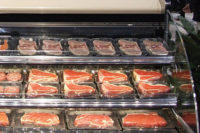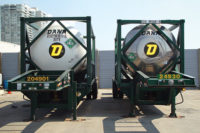While much attention is focused on refrigerant reclamation, there is the reality that, for various reasons, not all the refrigerant returned to reclaimers will make it back to the market. The most common problem relates to purity. Just as contractors should not submit questionable refrigerant to reclaim, reclaimers may at times determine that some batches may not be able to be brought back to ARI-700 purity standards.
Such refrigerant then has to be destroyed.
At the November meeting of the parties to the Montreal Protocol in Ghalib, Egypt, participating countries asked that the United Nation’s Technology and Economic Assessment Panel (TEAP) review new technologies for the destruction of ozone-depleting substances.
The processes to destroy refrigerants in an environmentally correct way are varied and expensive and often the descriptions of the processes are mind numbing - not to mention the record keeping.
Within the HVACR industry, one person taking a high profile in the sector is Lew Steinberg, president of Midwest Refrigerants. He said he has developed a technology to dispose of CFCs, HCFCs, and HFCs.
He said one goal is to offer this as an option for contractors, reclaimers, or refrigerant owners who may not feel the reclaim or separation option is viable for mixed refrigerants and thus have no other way to dispose of them. Steinberg said his company’s process is “capable of inexpensively disposing of all unwanted refrigerant gases.”
According to Steinberg, Midwest’s technology is known as CTC REFRI-GREEN Process (or the technical name Pyrolytic Conversion of Organic Halides) and its patents are now pending. “Existing technologies rely on high temperature incineration to dispose of unwanted refrigerants. Midwest’s technology operates at significantly lower temperatures, greatly reducing energy consumption, which makes the disposal process more economical and more energy efficient.”
Among other points, he noted, were:
• The capability of disposing of CFCs, HCFCs, and HFCs no matter how mixed.
• The flexibility to work equally well with perfluorocarbons (PFC), which are used in the electronic and semi-conductor industries; or halons, which are used as fire extinguishants.
• The ability to capture carbon dioxide and/or carbon monoxide waste gases from the process and put them to further use.
• The ability to capture the disposal gases/emissions and create quality reusable feedstocks.
Steinberg said he sees increasing need for his technology. “With the Montreal Protocol’s successful gradual phase out of the manufacturing and use of CFCs, there is now little demand for these refrigerants and they need to be eliminated. HCFCs have now begun to be phased-out, which will result in substantial quantities of unwanted product that will also need to be disposed. And the industry’s planned introduction of the new refrigerant HFO-1234yf in several years will dramatically accelerate the need to eliminate all old refrigerants that are high GWP ozone depleting substances.”
Steinberg added, “The technology also provides a viable means to obtain and trade credits for CO2-equivalent emissions.”
In regards to the TEAP review of new technologies with a high potential for dealing with ozone depleting substances, Steinberg said Midwest has prepared an application, which has been reviewed and submitted by EPA for TEAP approval.
For more information, visit www.midwestrefrigerants.com or www.epa.gov/ozone.
Publication date:03/08/2010
Copyright ©2025. All Rights Reserved BNP Media.
Design, CMS, Hosting & Web Development :: ePublishing






